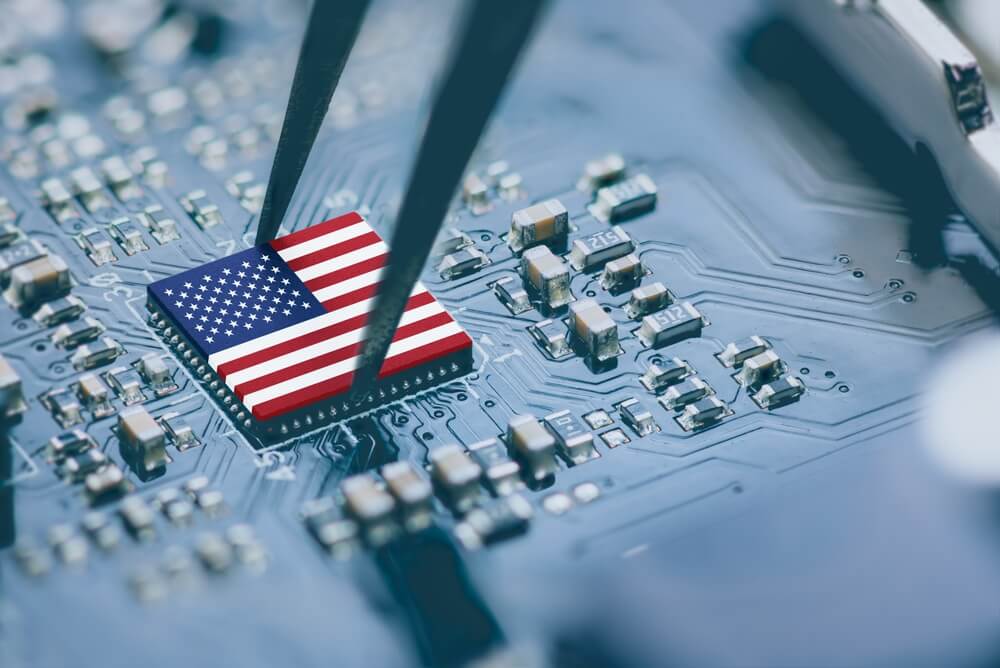These are historic days for the intersection of industrial policy and national security. Across the country, investments in semiconductor manufacturing spawned by the Creating Helpful Incentives to Produce Semiconductors (CHIPS) and Science Act are creating new factories and thousands of high paying jobs. America’s new commitment to domestic manufacturing should be celebrated, but there is more to be done and budget priorities must align with national security objectives.
Unfortunately, President Biden’s proposed defense budget for fiscal year 2025 eliminates further funding to bridge the shortfall in electronic components needed for semiconductors to function.
A semiconductor by itself provides no utility until it is packaged and mounted on a printed circuit board (PCB), which connects to other components. As chips and electronic systems have become smaller and more complex, technologists have developed PCB materials and interconnections with advanced capabilities.
However, the U.S. industrial base for electronic interconnection has moved overseas in the last 30 years, to an extent even greater than semiconductors. U.S. PCB manufacturing has eroded from more than 2,000 manufacturers making 30% of the global supply in the 1980s and 1990s to fewer than 150 companies producing just 4% of global supply today. That figure is less than 1% for integrated circuit substrates, the specialized materials they’re mounted on, and “advanced packaging” technology.
Compared with the 10% to 15% share of global semiconductor manufacturing in the U.S., which set off alarm bells and a push for the CHIPS and Science Act, the rest of the domestic electronics supply chain is in dire straits.
Without a significant federal commitment to the U.S. electronics industry, all of those advanced chips coming soon from Arizona, New York and Ohio will still need to be shipped abroad to be packaged and interconnected on PCBs and then fitted into larger systems. This problem will continue to get worse if the PCB industry remains marginalized by a national supply chain strategy almost entirely focused on chips, which are only one component in a complex technology stack.
Zeroing out PCB funding in the fiscal year 2025 budget proposal is puzzling because U.S. policy had been headed in the right direction. Congress and both the current and previous administrations have identified PCBs and related technologies as critical shortfalls in the U.S. supply chain in multiple reports.
In March 2023, President Biden issued a “Presidential Determination” that trusted PCBs are a national security requirement, and the administration announced a series of awards to relevant projects under the Defense Production Act. The recently released National Defense Industrial Strategy further identified shortfalls in America’s electronic ecosystem as a national security priority. Just eight weeks ago Congress wrapped up the fiscal year 2024 budget cycle by appropriating $587 million for Defense Production Act purchases and directed the Pentagon to prioritize investments in PCB fabrication.
The United States needs reliable semiconductor manufacturing as well as a reliable industrial base for electronic interconnection. Boosting semiconductor manufacturing alone is insufficient to maintain the technological edge required by the U.S. national defense strategy.
That’s why the leaders of 49 electronics companies recently called on Congress to sustain current investments in the electronics industrial base.
Providing robust funding under the Defense Production Act for advanced PCBs, substrates and packaging projects would be a small investment – only $86 million, or a fraction of a percent of total annual defense spending. But it would strengthen reliable access to critical technology that powers billions of dollars’ worth of Pentagon equipment purchases.
For all these reasons, IPC and the Printed Circuit Board Association of America call on Congress to shore up the United States’ dangerous vulnerabilities by providing robust funding for Defense Production Act purchases of PCBs and advanced packaging.







